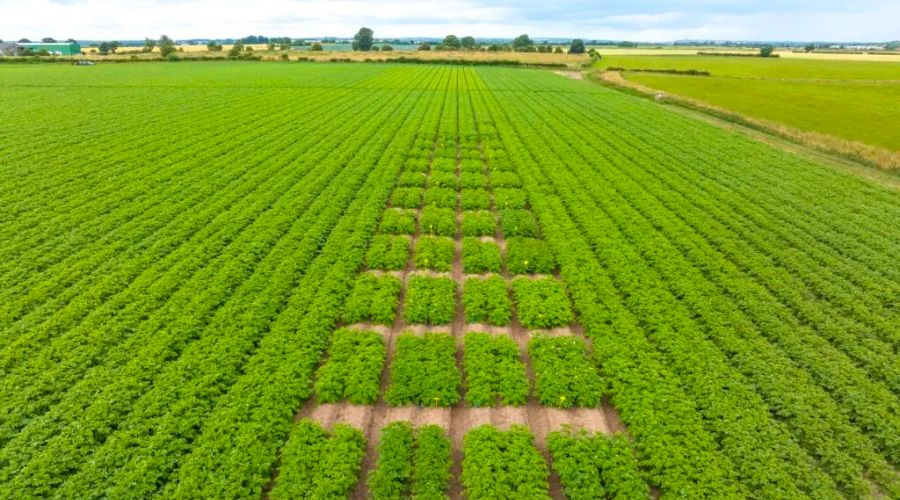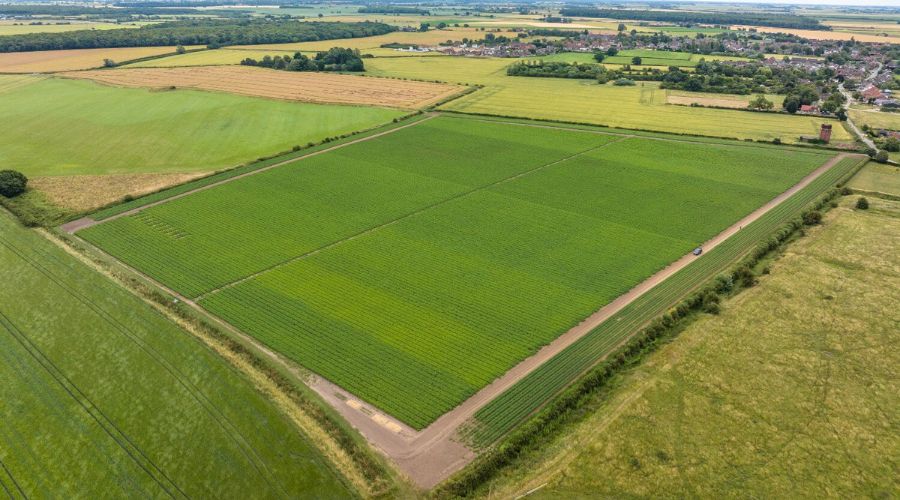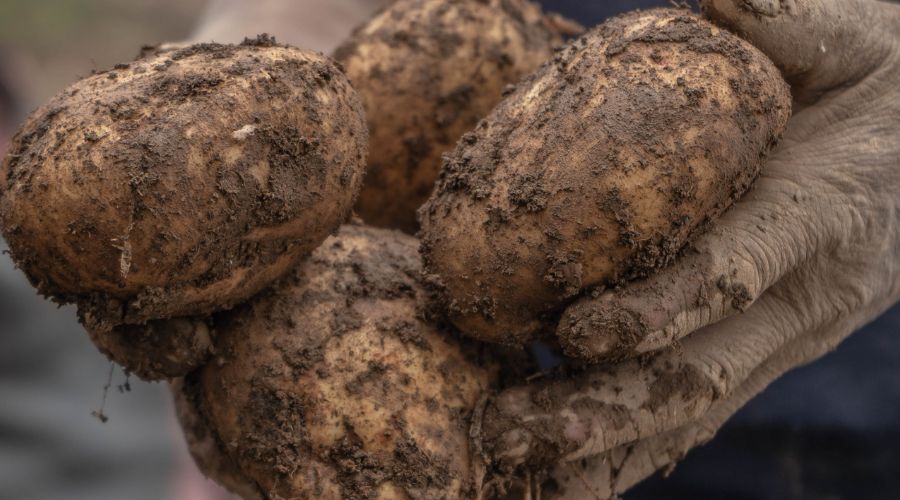Crop nutrition and Net Zero: When is enough, enough?
3rd September 2023
Extreme weather events driven by climate change and industry net zero commitments are focusing the potato supply chain’s attention on how to reduce the crop’s carbon footprint. Andrew Blair, field technical manager at the UK’s largest potato supplier, Branston, explains how an Innovate UK funded project is examining the potential for reducing carbon in potato production from growing through to storage and transport.

Now in its second year of three, Branston’s Net Zero crop nutrition project is working with partners agritech firm B-hive Innovations, the University of Lincoln, crop storage technologists Crop Systems Ltd and multiple growers. The project is establishing a process that will achieve the lowest possible GHG emissions while still producing a commercially viable crop.
In this year’s Net Zero field trials – which are being undertaken with David Armstrong Farms in Lincolnshire and Arbikie Farming in Scotland – the main focus is on optimising crop nutrition. Nitrogen fertiliser is an essential element in growing a crop of potatoes, but it also makes up a significant part of the potato carbon footprint.
As with most other conventional field crops, a good dose of fertiliser is needed to encourage plant growth and boost production. Branston is looking at the potential to rely less on synthetic fertilisers through a range of different trials – from novel sources of fertiliser, to the potential for reducing fertiliser inputs and recycling nutrition in the field.
In both trial fields, Branston established a base-line plot with no nitrogen applied. Then it has set up further plots with varying levels of nitrogen application, both from conventional and from novel sources. It is already noticing differences in the colour and vigour of the canopies; it will be interesting to see what variation we get in yield at harvest.

Branston is already noticing differences between plots in the colour and vigour of the canopies.
Crop nutrition – testing plant feeding levels
Branston are also assessing how much it can feed through the leaf as the crop is growing. R-leaf is a new technology with the potential to change the way we think about crop nutrition.
Developed by Crop Intellect, the photosynthetic catalyst is sprayed onto the leaf and, in the presence of sunlight, turns atmospheric NOx gases such as nitrous oxide (N2O), nitric oxide (NO) and nitrogen dioxide (NO2), into nitrate that can be used by the plant. R-leaf could enable growers to reduce the fertiliser application at planting, knowing that they can top up through the growing season.
To work out what the plants need as they grow, Branston is evaluating a new system from Piketa. This system will give in-field, real-time nutrient analysis via the leaves. It has the potential to save the cost of lab analysis and allow growers to respond immediately by feeding the crop what it needs, when it needs it.
The carbon footprint of producing synthetic nitrogen fertiliser is already well documented. What Branston is particularly interested in for the Net Zero project is what happens as the crop grows and the fertiliser breaks down in the soil. On this project it’s working closely with the University of Lincoln. Together they are looking at soil health and gaseous emissions at field scale throughout the growing season.
Nitrous oxide – which is 265 times more potent a greenhouse gas than carbon dioxide is released from the soil as synthetic nitrogen-based fertiliser is broken down. The University of Lincoln is measuring this important greenhouse gas throughout the growing season across all the fertiliser plots.
They are also collecting and analysing the CO2 and other gases that are released from the soil, across the fertiliser trial and the range of different types of cultivations that are also part of the Net Zero field trial.

The potato industry needs a step change if it is to achieve its ambitious net zero targets.
A commercially viable crop
Different potato varieties may also play an important role in reducing the carbon footprint of production. Plant breeders are assessing new varieties to see which ones can perform at low levels of nitrogen and can produce a quality, high yielding crop with reduced irrigation and lower quality land.
While much of the work undertaken is around reducing inputs, the team is well aware that yield and quality are still important. Any reductions that lower the marketable yield could necessitate an increase in other inputs and detriment the overall carbon footprint. Branston is looking at ways to get the balance right for truly sustainable potato production.
In reality, a step change is required from the potato industry as it looks to achieve ambitious net zero targets. A “business as usual” approach isn’t going to cut it anymore, and the responsibility rests across everyone involved to find solutions.
The direction of travel is changing, and for the most part the industry seems to be steering in the right direction. However, a consistent, concerted, combined effort is needed to sift the ideas and find data-backed, sustainable solutions that can help us achieve our collective target.
Please visit the Branston website for more information.
